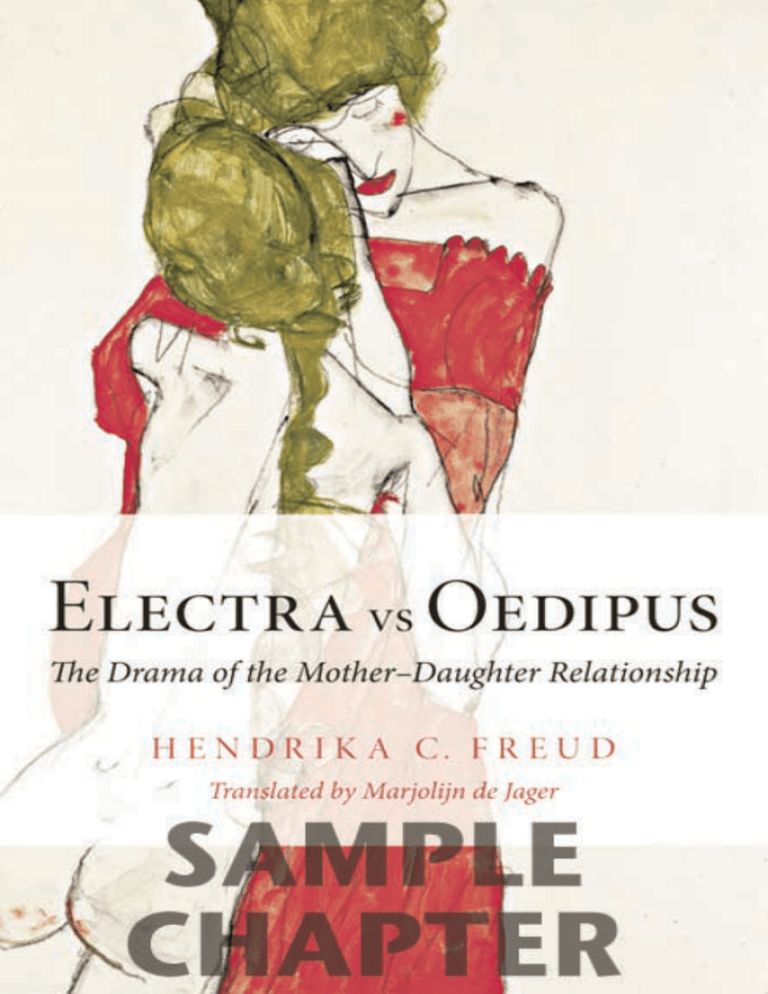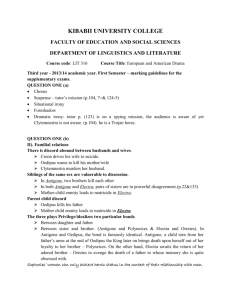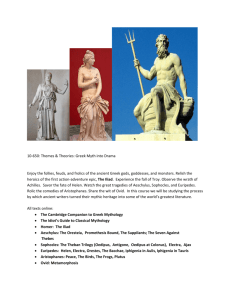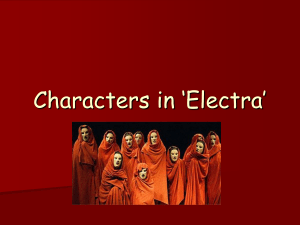
First published in Amsterdam in 1997
by Uitgeverji Van Gennep BV as
Electra versus Oedipus, Psychoanalytische Visies op de Moeder-Dochter
Relatie
First published in the UK in 2011
by Routledge
27 Church Road, Hove, East Sussex BN3 2FA
Simultaneously published in the USA and Canada
by Routledge
270 Madison Avenue, New York, NY 10016
Routledge is an imprint of the Taylor & Francis Group,
an Informa business
© C Van Gennep Amsterdam
Translation © 2010 Marjolijn de Jager
The right of Hendrika C. Freud to be identified as author of this
work has been asserted by her in accordance with sections
77 and 78 of the Copyright, Designs and Patents Act 1988.
Typeset in Times by
RefineCatch Limited, Bungay, Suffolk
Printed and bound in Great Britain by
TJ International Ltd, Padstow, Cornwall
Paperback cover design by Andrew Ward
All rights reserved. No part of this book may be reprinted or
reproduced or utilized in any form or by any electronic,
mechanical, or other means, now known or hereafter
invented, including photocopying and recording, or in any
information storage or retrieval system, without permission in
writing from the publishers.
This publication has been produced with paper manufactured to
strict environmental standards and with pulp derived from
sustainable forests.
British Library Cataloguing in Publication Data
A catalogue record for this book is available from the British Library
Library of Congress Cataloging-in-Publication Data
Halberstadt-Freud, Hendrika C., 1937–
[Electra versus Oedipus. English]
Electra vs Oedipus : the drama of the mother–daughter
relationship / Hendrika C. Freud
p. cm.
1. Electra complex. I. Title.
BF175.5.E45H3513 2010
155.6′463—dc22
2010005928
ISBN: 978-0-415-54796-3 (hbk)
ISBN: 978-0-415-54797-0 (pbk)
http://www.routledgementalhealth.com/electra-vs-oedipus-9780415547970
Contents
Preface
viii
1 Love and hate between mothers and daughters
1
2 The symbiotic illusion
5
3 History of maternal love
27
4 Nina: Daughter of a single mother
49
5 Electra versus Oedipus
63
6 What does woman want?
83
7 Childbirth and depression
109
8 Martha: A woman in her middle years
125
9 On rejected mothers
140
10 History and hysteria
154
Notes
Bibliography
Index
http://www.routledgementalhealth.com/electra-vs-oedipus-9780415547970
176
188
199
Chapter 1
Love and hate between
mothers and daughters
The character of Electra dates back to ancient Greek mythology. Various
playwrights, such as Aeschylus, Sophocles, and Euripides, devoted tragedies
to her, and, for the latter in particular, mother and daughter are at the heart
of the play. Everything that could possibly go wrong between the two of them
is described in these works.
It is not without reason that, through the centuries, even after the classical
era, Electra has continued to be an inspiration for many authors. The legendary Electra was far more preoccupied with her mother, whom she hated, than
with the father she adored. Agamemnon, her father, had left home ten years
before the setting of the play, when he departed for Troy as military commander to fight for the liberation of the beautiful Helen who had been
abducted – thereby triggering or actually causing the Trojan War. In the
meantime, Electra’s mother Clytemnestra had taken a new lover. Electra feels
neglected and rejected by her. She is jealous of her mother but also of her
mother’s lover. Excluded from all intimacy, she wanders around the palace,
moaning and cursing.
Electra dislikes her role as a woman. She rebuffs all thoughts of sexuality.
She has no desire to marry, and, if that does have to happen, she certainly
wants no children. Her histrionic personality inspires loathing from every
corner. Electra has become the prototype of a woman with female problems.
She is a domineering victim who manages to conceal her insecurity and
yearning for motherly love beneath a great deal of noise. She disparages her
more feminine sister and uses her brother Orestes as a tool to avenge herself
on her mother. Taking revenge on this detested mother is her only goal in life.
Her youth, her beauty – she sacrifices them all for this one purpose. After
many bitter and sorrowful years, filled with pain, she succeeds in her scheme:
her mother is murdered as she pleads for mercy.
This is a brief outline of the image we see when we look at Electra from the
outside. But how does Electra herself experience her dilemmas, what is her
psychic reality, what are her unconscious conflicts?
Briefly told and magnified as only possible in a work of art, the mythical
Electra figure shows many of the unconscious preoccupations with which
http://www.routledgementalhealth.com/electra-vs-oedipus-9780415547970
2
Electra vs Oedipus
women with problems may be struggling. For instance, the fear of being
swallowed up by the powerful mother figure is in conflict with a desperate
longing for her love and affection. But masochistic complaints, depression,
and sexual inhibitions are frequently manifested as well. All of them are
problems that relate back to the very first love object, the mother – just as
with Electra.
Culture has changed and is changeable, but certain situations are set in
stone. Girls begin their life in a homosexual love relationship – in the sense of
with a person of the same sex – with a woman: their mother. Not until later is
the heterosexual love for their father added.
Paradoxical as that may sound, girls need their mother’s cooperation in
detaching themselves from her. Sometimes that opportunity for independence is lacking, and women have to find a way to sail between the Scylla of
Electra’s murderous hate and the Charybdis of total symbiosis. Both
extremes lead to an unhealthy mother–daughter relationship. As always, it is
only the happy medium that can progress to a healthy development.
The father is often idealized and, just as Electra’s father, he is missed or
lamented in his absence. Often fathers are absent or too little involved with
their children, who therefore have to rely on their mother. The girl attempts to
direct herself to her father when he is available. If not, she must make do with
her fantasies. Sometimes she has a chance to receive the love for which she
yearns from her father, the love that she may not have been given by her
mother. Sometimes that attempt fails. A second disappointment is then the
sad result. However, even if it does succeed, her mother remains the primary
object of her desire, which is at best transferred to her father.
Subsequently, for a healthy development it is necessary for the image of the
omnipotent mother, the goddess, or the queen of childhood fantasy to be
abandoned. In psychoanalytic theory this figure is known as the phallic
mother, because she is simultaneously both man and woman, as it were. After
all, for small children the difference between the sexes is not very clear yet.
The fantasy that an individual can be both man and woman is discarded with
some difficulty. Even with regard to themselves, girls and women often continue to struggle with their bisexual identity.
The Electra complex is meant not to replace the Oedipus complex but to
complement it.1 The new discoveries around the cliffs that the woman must
steer clear of in her development are, in my opinion, better suited to a model
in which it is not the father but the mother who occupies centre stage.
Symbiosis, meaning the mutual dependency of two beings, is problematic
if taken as a phase of development. Mother and child do, of course, have
idyllic moments when they are completely wrapped up in each other. But
when a mother feels constantly dependent on her child’s endorsement, there
is a disorder at play. This can express itself, for example, in the need for a child
to cling to its mother when she is leaving because she would otherwise
have the sense that she is not a good mother. I call this unhealthy mutual
http://www.routledgementalhealth.com/electra-vs-oedipus-9780415547970
Love and hate between mothers and daughters
3
dependency the symbiotic illusion. It is a disorder that impedes the normal
maturation process. When such a bond between mother and daughter
remains intact for life, there is not enough room for independence and other
relationships.
The opposite of the symbiotic illusion – namely, total separation – is equally
inauspicious. Under ideal circumstances the girl partially detaches herself
from the mother. A girl needs to be able to shape her own identity but, at the
same time, continues to need her mother throughout her life as model and
counsellor.
Due to the open borders between mothers and daughters, styles of mothering and motherhood are transmitted from generation to generation. This can
be fortunate or harmful. Transgenerational transmission of traumas is a wellknown phenomenon and, obviously, not only along the female line, although
it is especially visible, forceful, and inescapable there.
For a woman, the inner bond with the mother can be a source both of
strength and of frustration. To a great extent, the child’s first relationship is
decisive for its identity and sense of self-worth, particularly among women.
Subsequent love relationships can be damaged when a woman continues to
see herself as the extension of her mother. Then mother and daughter keep
mirroring themselves in each other, as in the fairy tale of Snow White: ‘Mirror,
mirror on the wall, who is the loveliest of them all?’ Involuntarily, such a
daughter remains inside her mother’s range of influence and will continue to
be a part of her mother, body and soul. Instead of her own desires, she must
fulfil her mother’s wishes. The instinctive result of this is hostility towards her
mother, often hidden even from herself.
The way in which unconscious feelings of hatred can colour and decide the
emotional life of a daughter is the principal theme of this book. Separation is
related to autonomy. Women often interpret their detachment as a form of
aggression that might harm the mother. Thus they tend to conceal their anger
and turn it against themselves in the form of headaches, feelings of guilt, or
masochism. The purpose of this book is to use the fateful struggle of Electra
as a paradigm for conflicts in female development.
We shall see that the Oedipus paradigm in girls frequently ends in an
Electra complex – that is to say: rage with the mother and idealization of the
father. The other extreme, the ‘symbiotic illusion’ with the mother, appears
frequently as well. This prevents the girl from growing into an independent
person. Consequently, she is basically unable to enter into an adult heterosexual relationship. In her intimate relationships she will tend to claim the
other, to cling to or fuse with that person. The symbiotic illusion as quasiintimacy makes the other invisible as a separate individual.
A sound theory is indispensable in confronting reality, but everyday practice is still the most fascinating. Recently, Tessa, a beautiful and well-educated
young woman, came into my consultation room with a mysteriously amused
look on her face. This shy woman with a soft voice smiled at me with a
http://www.routledgementalhealth.com/electra-vs-oedipus-9780415547970
4
Electra vs Oedipus
mixture of ‘glad to see you’, with alarm in her gaze, and with unambiguous
triumph, almost a note of pity. When questioned, she burst into uncontrollable laughter that at the same time she was ashamed of, as if she were
betraying something about herself that would have been better left concealed.
Then an elaborate panorama unfolded around her and her parents, who had
divorced early on.
Tessa’s mother had trouble listening to and being interested in her, while
her father, a childlike and egocentric man who was more seductive than
interested, always praised her to the sky to others. This habitually led to
scenes that were embarrassing to her, whereby she was pushed forward as her
father’s showpiece. A contrasting scenario was played out with her mother.
Being small and helpless without a trace of hostility produced at least a bit of
attention in this distant and overburdened mother. Stepping more into the
limelight would only have elicited rejection, Tessa feared.
Upon closer examination it turned out that Tessa had always been afraid
of her mother’s jealousy. She was quite astonished when I first articulated
that possibility. Her mother, who had not had much education, never quite
knew what her daughter was studying. During therapy it became clear quite
quickly what a taboo existed for her in competing with me as a woman. This
ambitious, highly competitive young woman had learned to live with a hidden
identity. She was terrified of the murderous envy that in her fantasy she might
incite if she were to be successful, and she had therefore learned to conceal
her triumphs beneath a great show of modesty.
This example illustrates how the Oedipus story about patricide and the
little boy’s love for the mother is not automatically applicable to a girl.2 Of
course, there is a vital attraction between the sexes and being different continues to be the most exciting thing there is. But the gratification of a girl’s
desires often has a great deal more to do with her mother than with her father.
http://www.routledgementalhealth.com/electra-vs-oedipus-9780415547970






